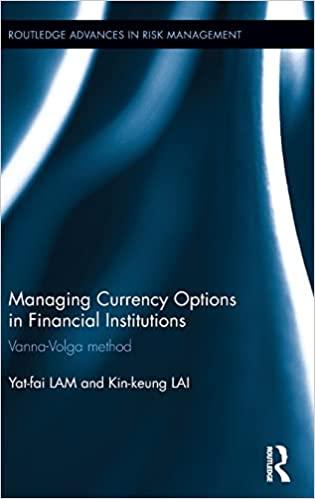Question
Consider a bank that receives a $1 deposit at t = 0 from each of N = 105 dierent depositors. It invests I = $10
Consider a bank that receives a $1 deposit at t = 0 from each of N = 105 dierent depositors. It invests I = $10 of shareholdersequity in the bank and lends L = $110, keeping C = $5 as cash reserves. Out of the N = 105 depositors there are N1 = 30 depositors (called type-D1 depositors) who are capable of monitoring the banks management; the remaining N2 = 75 depositors (called type-D2 depositors) keep their money in the bank simply for transactions and safekeeping purposes. The cost of monitoring the bank for an individual type-D1 depositor is m = $0:01 per period. The bank has two mutually exclusive investment opportunities (maturity at t = 1): - Project (or loan) A pays RAH = $200 with probability pAH = 0:7 and RAL = $0 with the remaining probability pAL at t = 1. - Project (or loan) B pays RBH = $150 with probability pBH = 0:9 and RAL = $112 with the remaining probability pBL at t = 1. If they are liquidated any time before t = 1, they are worth only k = $25 to the bank. If the bank chooses one of these projects, the probability that the bank will actually end up with that project is q = 0:9. With probability 0:1 the bank will have inadvertently chosen the other project (thus, we assume that the bank may make errors in project choice). Type-D1 depositors can discover, by monitoring, banks true project choice at some point in time intermediate between t =0 and t = 1, say at t = 1=2. These depositors can, if desired, force liquidation of the bank by withdrawing their deposits before t = 1 (at t = 1=2). 1 Type-D2 depositors plan to withdraw at t = 1, but each is su
Step by Step Solution
There are 3 Steps involved in it
Step: 1

Get Instant Access to Expert-Tailored Solutions
See step-by-step solutions with expert insights and AI powered tools for academic success
Step: 2

Step: 3

Ace Your Homework with AI
Get the answers you need in no time with our AI-driven, step-by-step assistance
Get Started


